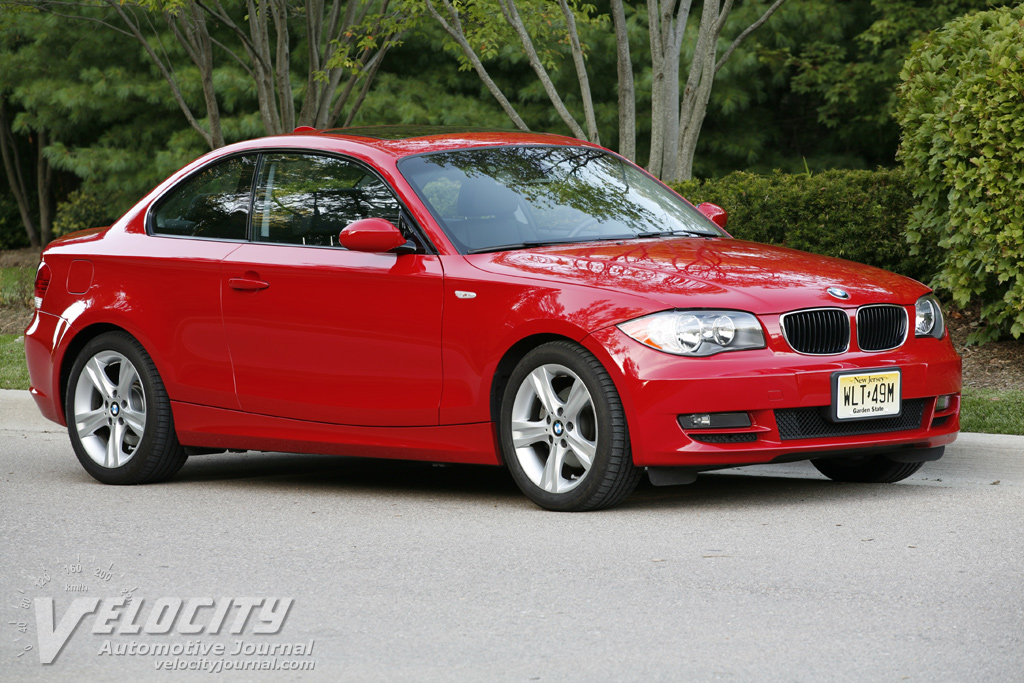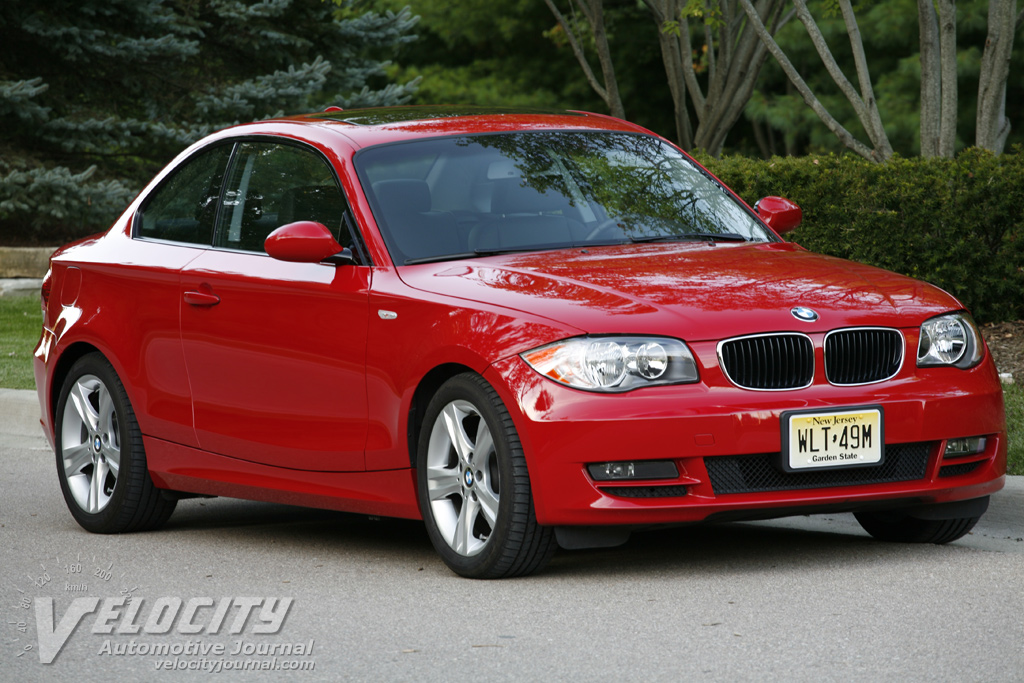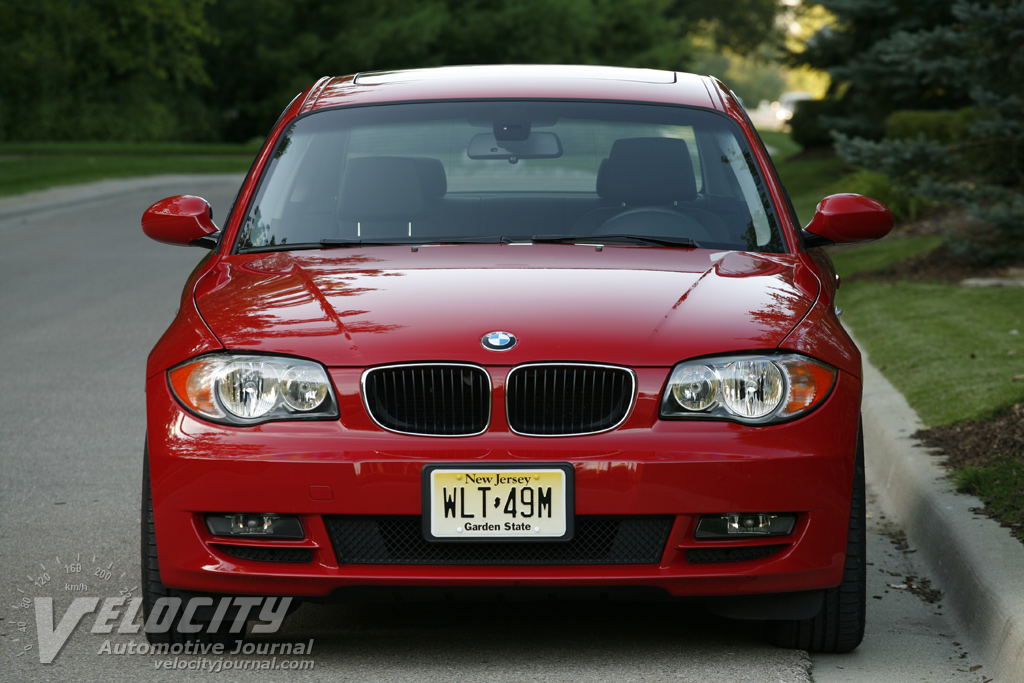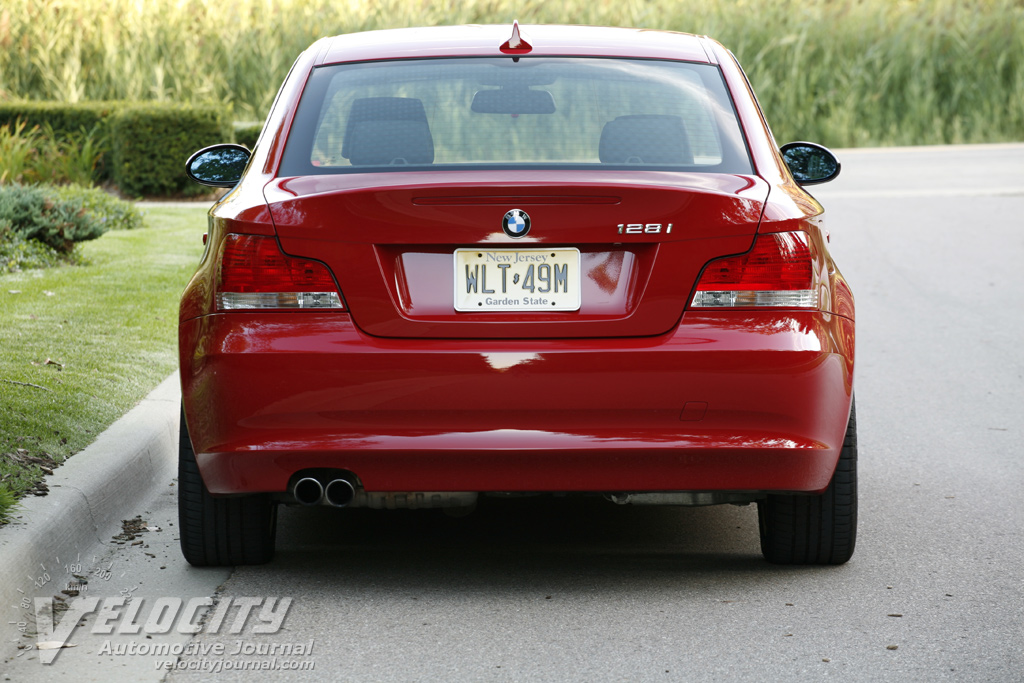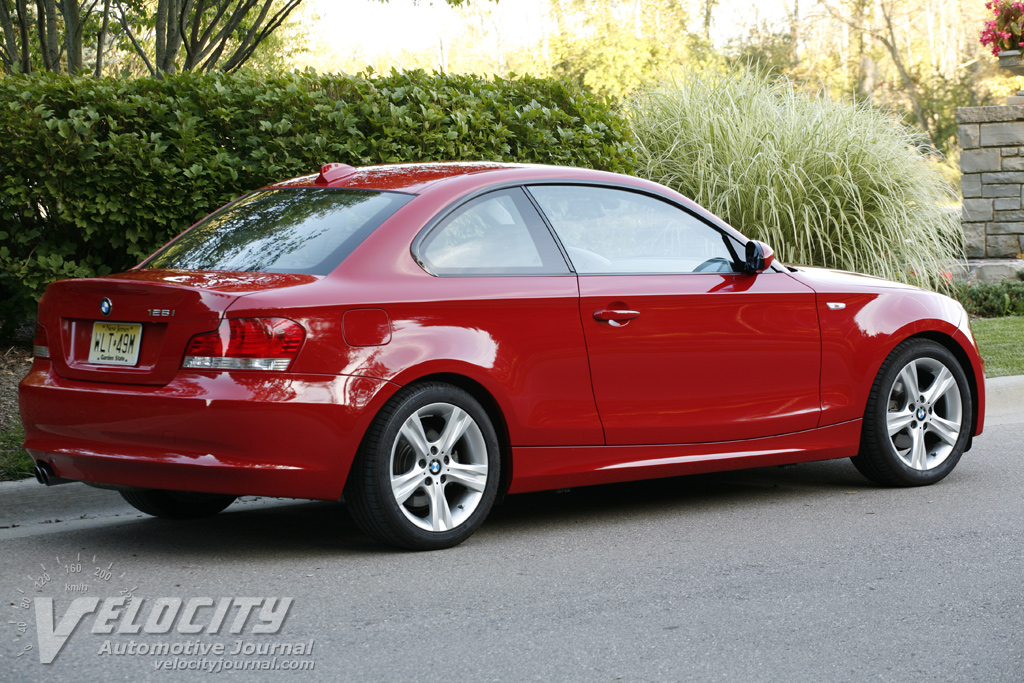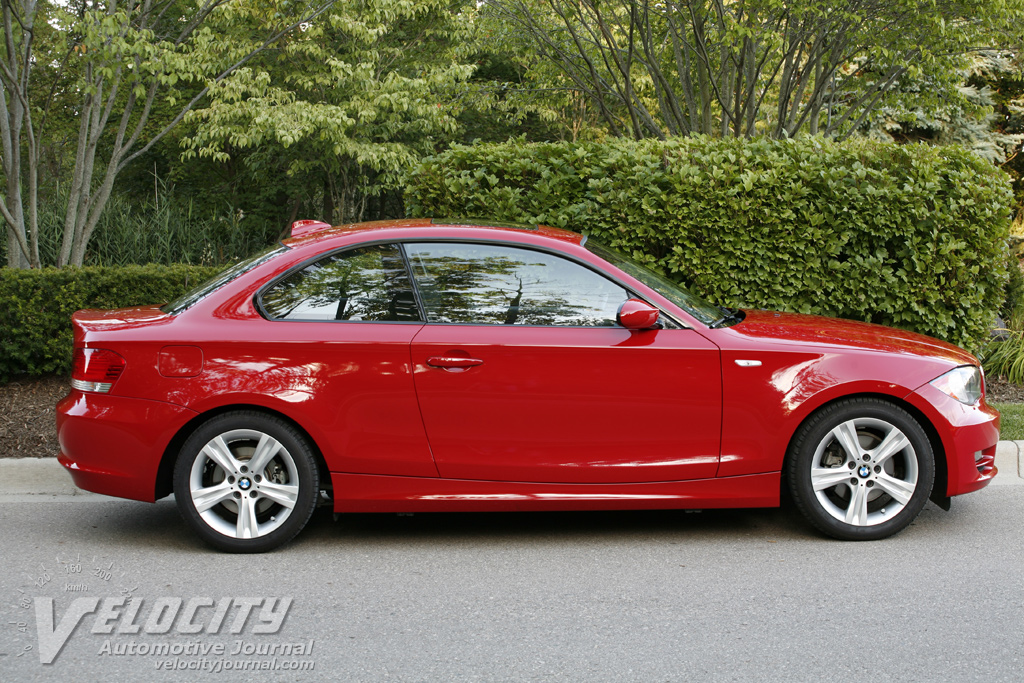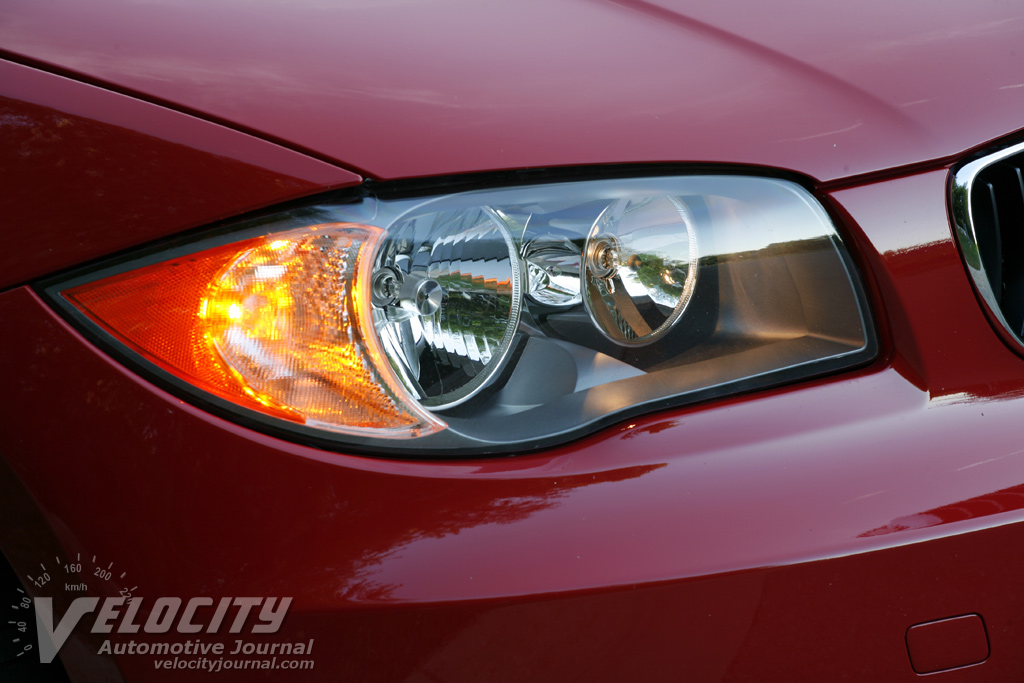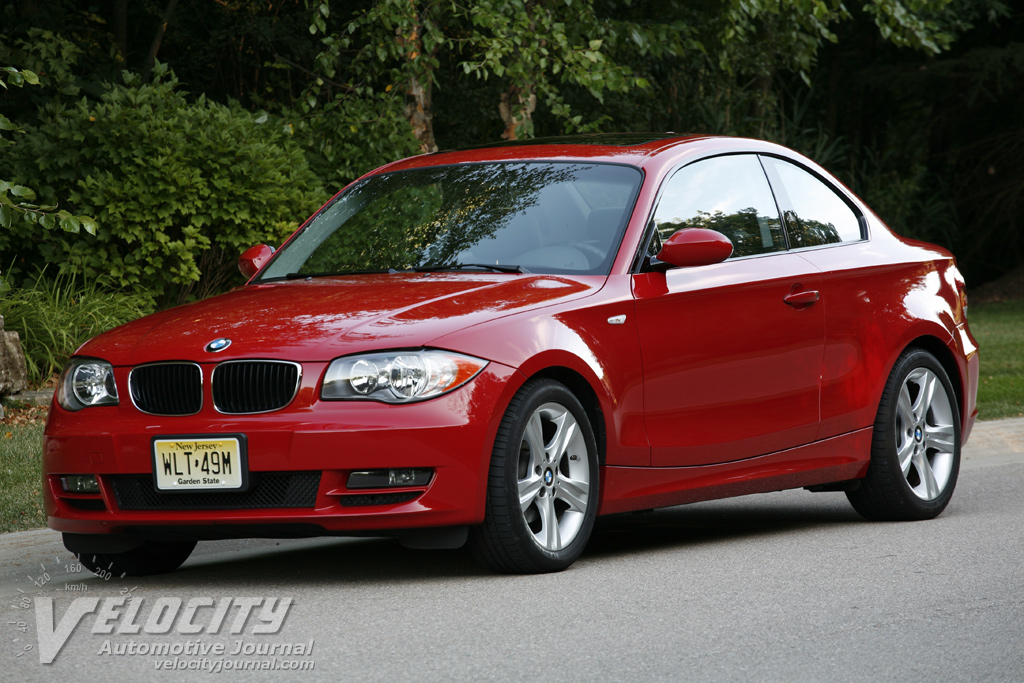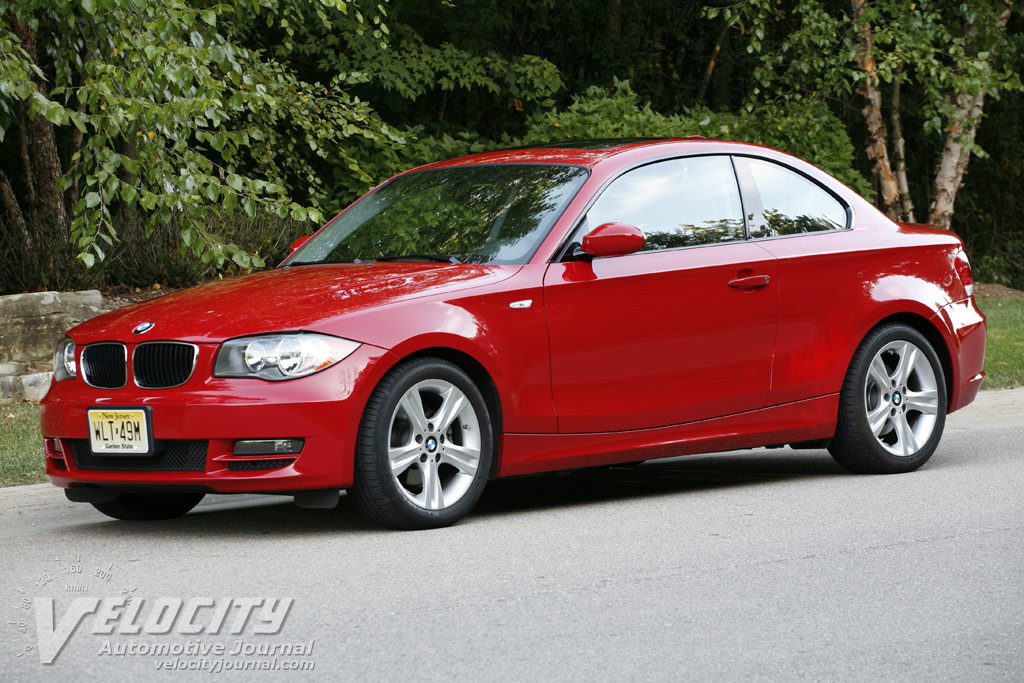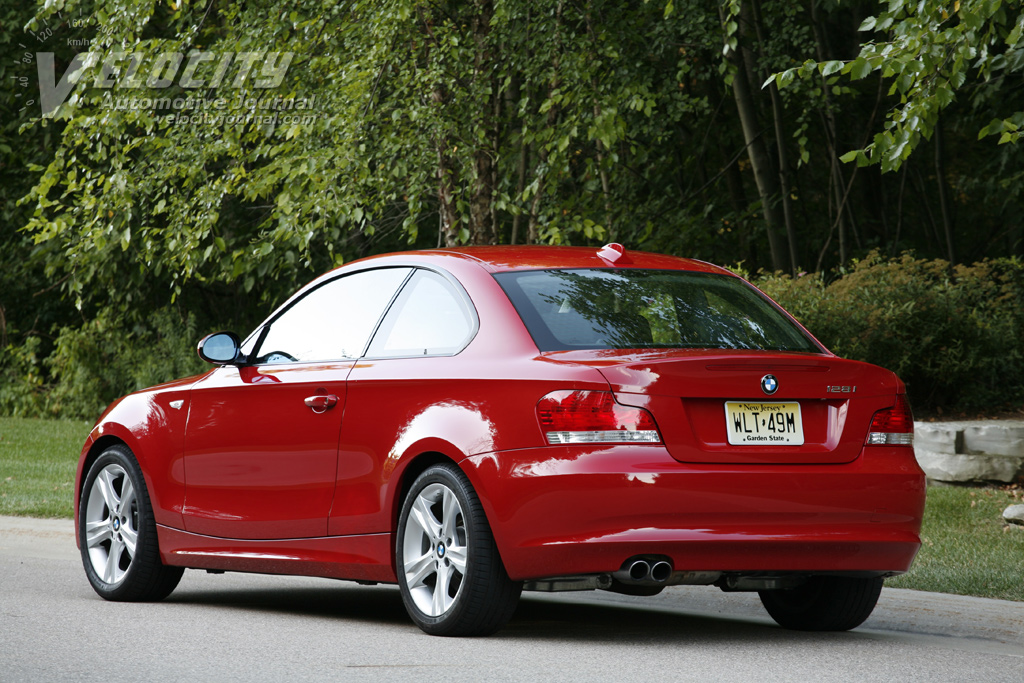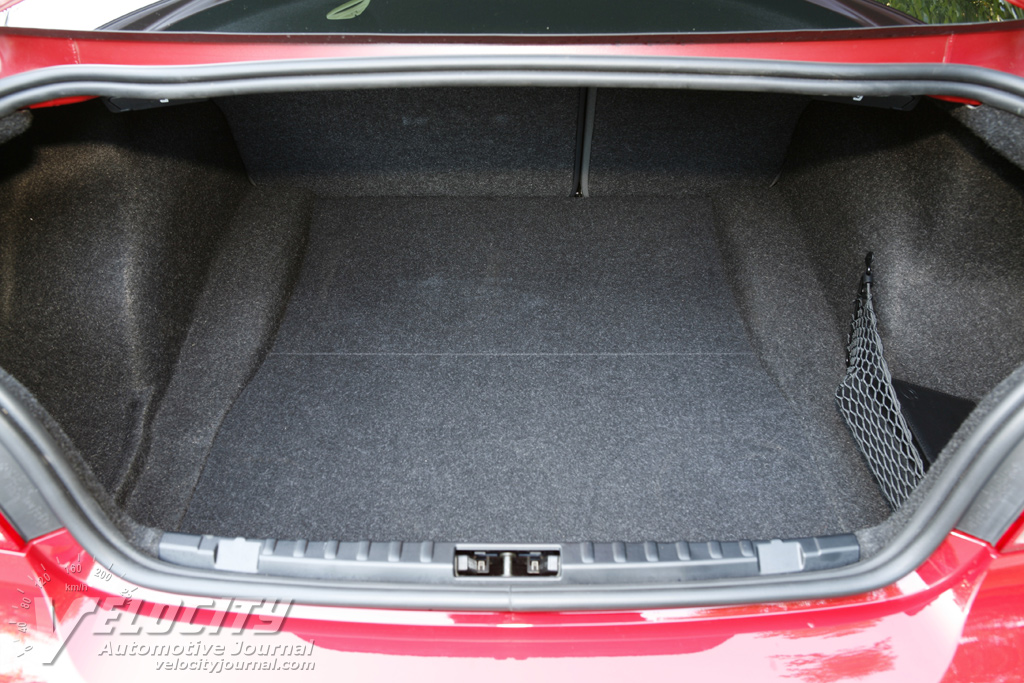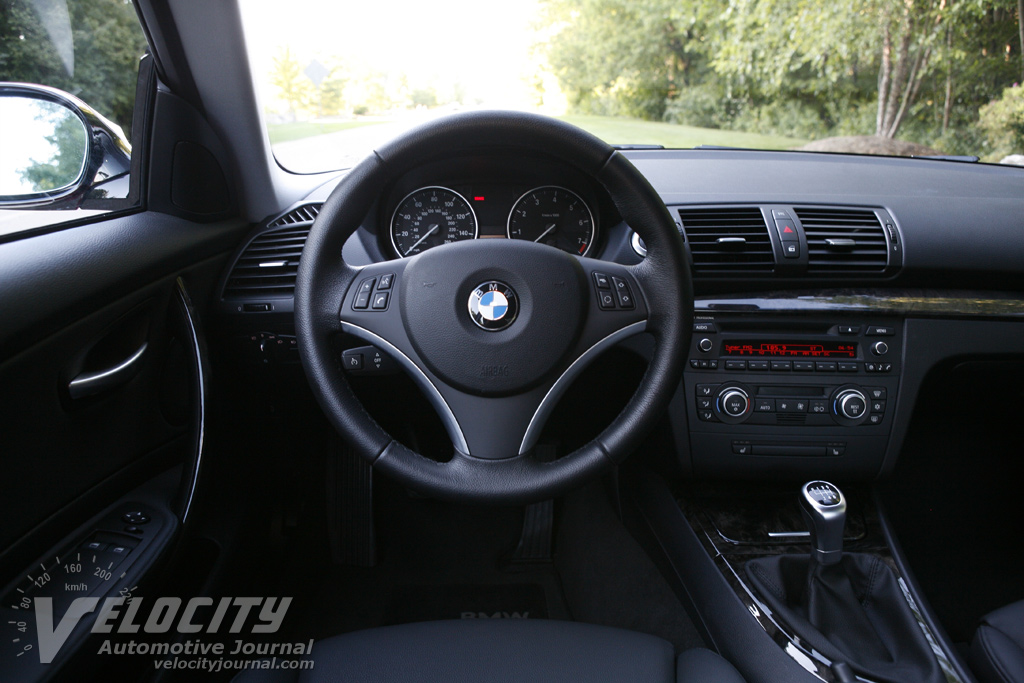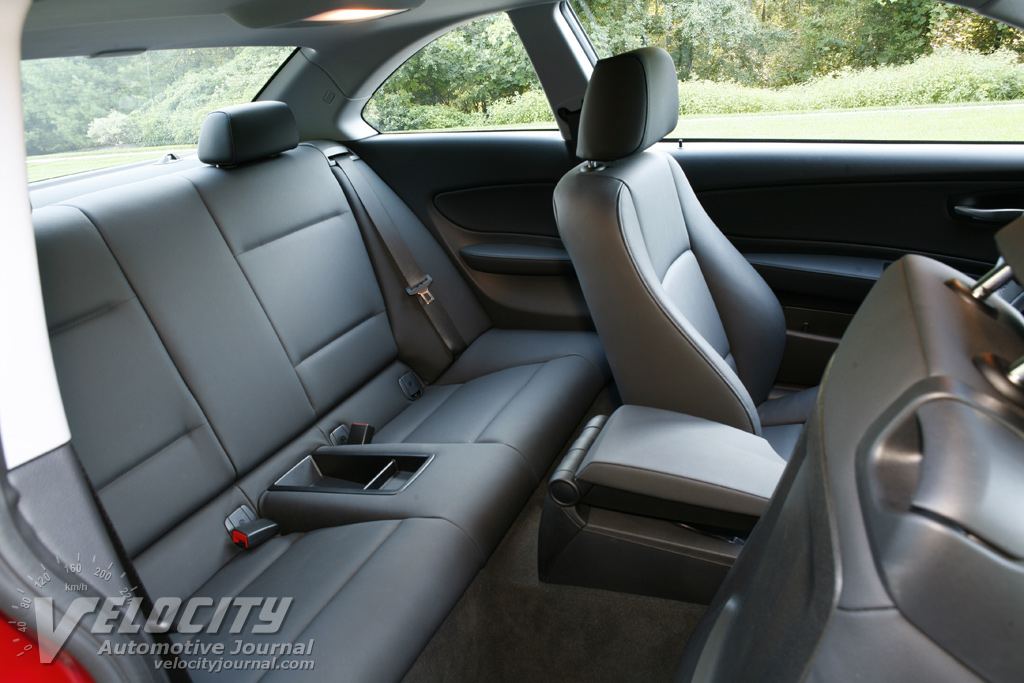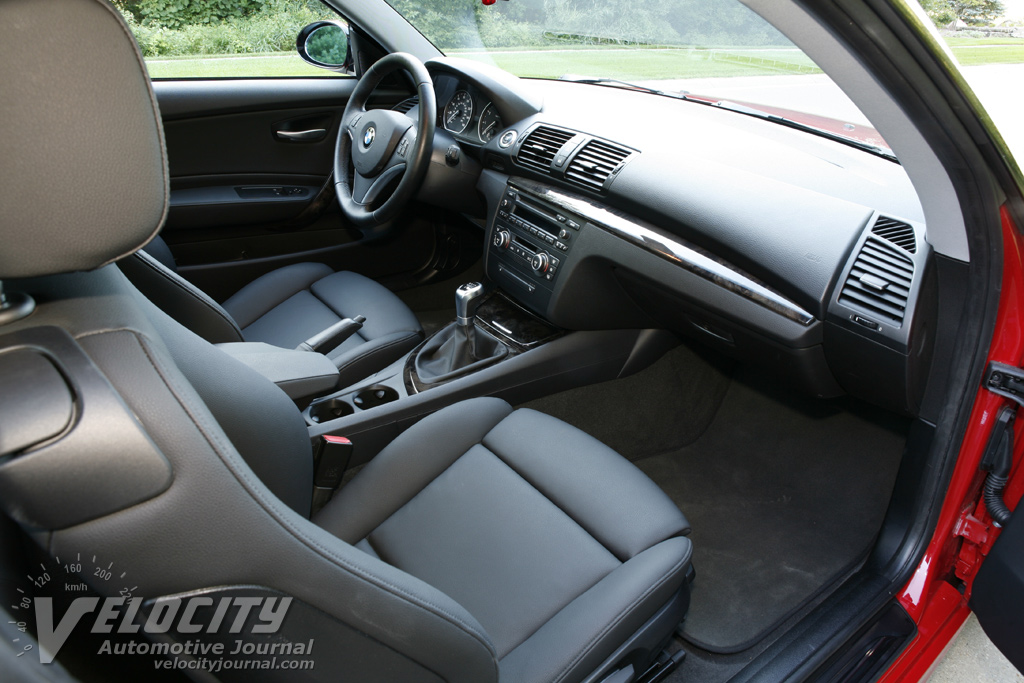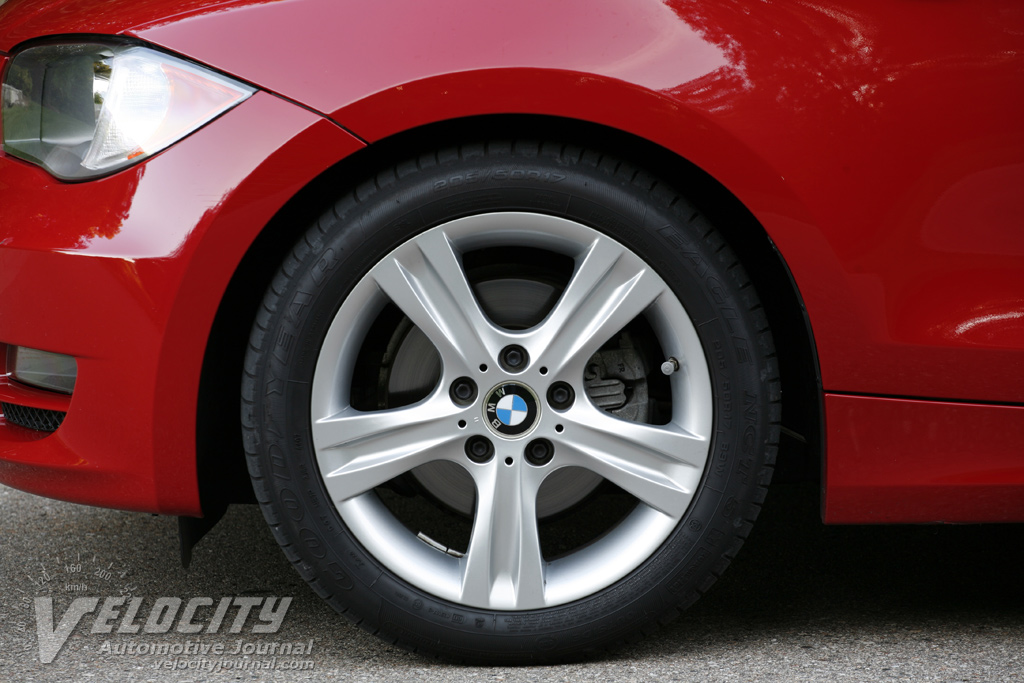2008 BMW 128i Coupe
08/21/2008
Shahed Hussain
As the 3-Series became larger and more luxurious, its price crept up as well, which opened up a slot at the bottom of the BMW lineup for the smaller 1-Series. Available only as a coupe and convertible in the US, BMW also sells a 5-door hatchback version of the 1-Series in Europe. Powerplant options mirror that of the 3-Series: a normally aspirated 3.0L inline-6 with 230-bhp (128i) or a twin-turbo variant that cranks out 300-bhp (135i). Unlike the 3-Series, which offers all-wheel drive, all 1-Series models are available with rear-wheel drive only.
We tested a lightly optioned 128i Coupe ($28,600) equipped with the standard 6-speed manual transmission, Black Leatherette (vinyl) seats, heated front seats ($500), Gray Poplar wood trim ($500), Sport Package ($1,200), and iPod/USB adapter ($400). Total sticker price was $31,975, including the $775 destination charge. We would consider upgrading to the Boston Leather interior ($1,450), and Xenon headlights ($800) but skip the wood trim. For 2009, BMW raised the base price by $600, and bumped up the Sport Package to $1,300; equipped with our preferred options, a 2009 128i would cost $33,975.
BMW has returned to the compact rear-drive sport coupe niche with the 1-Series. Few other automakers have entries that compete directly with the 128i, although roughly similar vehicles such as the Nissan 350Z, Mitsubishi Lancer Evolution GSR, and Subaru Impreza WRX all offer more power for about the same price. If you can sacrifice rear seats, then the 350Z is a worthwhile alternative, but more practical alternatives such as the all-wheel drive Mitsubishi and Subaru are also viable choices. Even so, aside from BMW's own 135i, there are really no counterparts to the 128i in the marketplace.
Although BMW gave the 1-Series a unique interior layout, it inherits several design elements from the more expensive 3-Series BMWs: instrument panel gauges, climate control, and the audio system are essentially identical. Glossy poplar wood lines the dashboard and center console; polished aluminum on the shift lever and steering wheel contrasts with the predominantly gray interior hues. Behind the shift lever are dual cupholders for the driver and front passenger. Portable MP3 players connect to the audio system via the optional iPod/USB adapter under the center console armrest.
Despite having mostly manual controls, the optional 8-way adjustable sport seats provide superb support and comfort; extendable thigh cushions and torso bolsters accommodate most passengers. The fat-rimmed steering wheel is wrapped in padded perforated leather that is easy to grip; buttons for Bluetooth phone and audio controls are integrated on the spokes. The uncomplicated instrument panel has a 160-MPH speedometer and 8,000 RPM tachometer, with smaller analog fuel level and fuel economy gauges at the bottom. A compact driver information display shows exterior temperature and trip computer data. Replacing the ignition key is an engine start/stop button on the dashboard that fires up the inline-6, but only if the key fob is inserted in its slot below. The standard audio system has a somewhat complex interface and cryptic abbreviations that may require a peek at the owner's manual. Similarly, the dual-zone climate control buttons have some baffling symbols that aren't easy to decipher; fortunately, most commonly used functions are clearly understandable.
Even though the rear seats will accommodate two passengers, most adults will find both headroom and legroom inadequate. While short trips are tolerable, the back seats are best suited for shorter occupants. For those who do fit, the seats offer better than average comfort. The folding armrest flips down to reveal a pass-through to the trunk; an included ski sack prevents dirty skis from soiling the interior.
What really draws driving enthusiasts to the 128i is its superb powerplant: a smooth 3.0L DOHC inline-6 with a distinctive exhaust burble. With 230-bhp @ 6,500 RPM and 200 lb.-ft. of torque peaking at only 2,750 RPM, this engine has impressive flexibility at low revs. The normally aspirated six can't match its turbocharged counterpart in the 135i, but its 230-bhp is more than adequate in the 3,252 lbs. 128i. Midrange acceleration is above average, but a downshift to fifth gear is sometimes required to pass. BMW claims a 0-60 MPH time of 6.1 seconds for the 128i when equipped with the standard 6-speed manual; top speed is limited to 149 MPH (when equipped with the Sport package). The EPA rates the 128i at 18/28 MPG (city/hwy.); we managed 26 MPG in combined city and highway driving.
BMW offers a choice of a close-ratio 6-speed manual from Getrag, or an optional GM-sourced 6-speed automatic. Our test vehicle was equipped with the standard manual transmission; the aluminum-topped shift lever snicks between gears. Shift gates are closely spaced, so occasionally we got fifth gear instead of third, but additional familiarity with the gearbox should minimize misjudged shifts. A progressively engaging clutch prevents embarrassing low-RPM jerkiness from the driveline.
No BMW would be complete without serious brake hardware; the 128i has 11.8-inch diameter vented discs all around. The brakes have no trouble hauling down this coupe from any speed with complete assurance. Superb feel and a firm pedal encouraged us to push the brakes hard, but brake fade was nonexistent in typical conditions. All 1-Series coupes are equipped with ABS, Dynamic Stability Control (DSC), and Dynamic Traction Control (DTC).
The 128i gets its sharp steering reflexes from a precise rack-and-pinion system; steering effort at parking lot speeds is above average, but lightens up considerably once underway. Road surface textures are telegraphed directly via the fat-rimmed steering wheel. Mild understeer is the predominant handling characteristic, which is reassuring for most drivers. Overall handling is nimble and balanced; the 128i steers around curves with precision unmatched by most of its competitors.
BMW retains its familiar suspension layout consisting of front struts, aluminum lower arms, coil springs, and anti-roll bar; at the rear is a five-link design with coil springs, dampers, and an anti-roll bar. Choose the optional Sport Package and the standard 16-inch wheel/tire combination is upgraded to 17-inch alloy wheels shod with 205/50WR17 Goodyear Eagle NCT5 run-flat tires. Out on the highway, the 128i remains amazingly planted at speeds well over the legal limit. The stiffer sport suspension absorbs most bumps, but the stiff run-flat tires stumble over severe frost heaves and potholes. Comfort-oriented customers should note that the taller sidewalls of the standard 205/55HR16 all-season tires should prove more compliance. Nonetheless, we think the occasionally jittery ride from the sport suspension is an acceptable tradeoff for telepathic handling on properly maintained roads.
We were impressed with the dynamic abilities of the 128i, which as the entry-level model in the BMW lineup fulfills the role of the classic 2002 from the 1970s. A blend of performance and tight handling wrapped in a relatively understated exterior design, the 128i is bound to appeal to both new and long-standing BMW customers; especially those who fondly remember the nimble reflexes of the previous 3-Series coupes. In its market segment, the 1-Series has few peers, simply because few manufacturers offer a powerful rear-drive coupe in such a tidy package. With a base price just under $31K, the 128i certainly isn't inexpensive, but customers are sure to welcome a more affordable model that is unmistakably a BMW.

